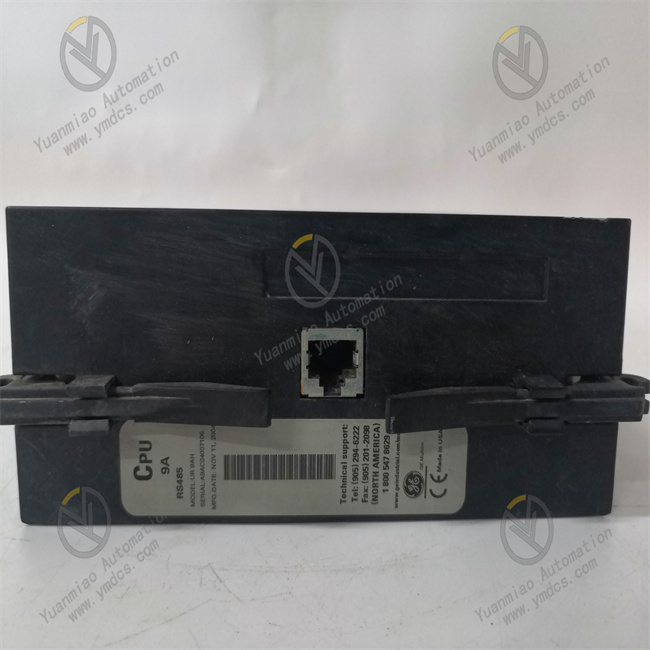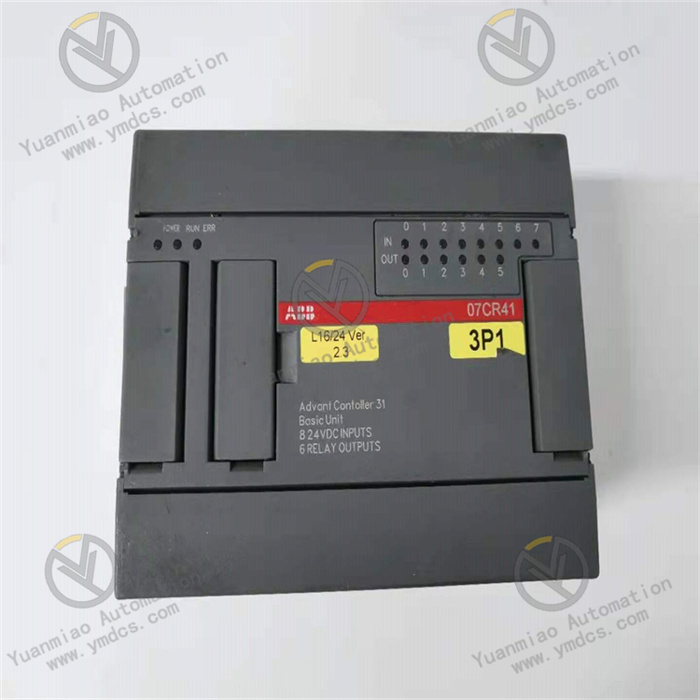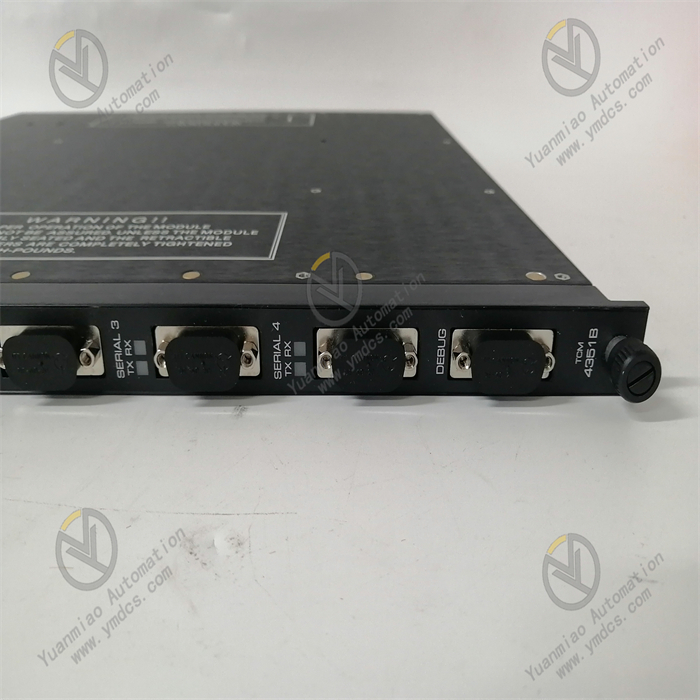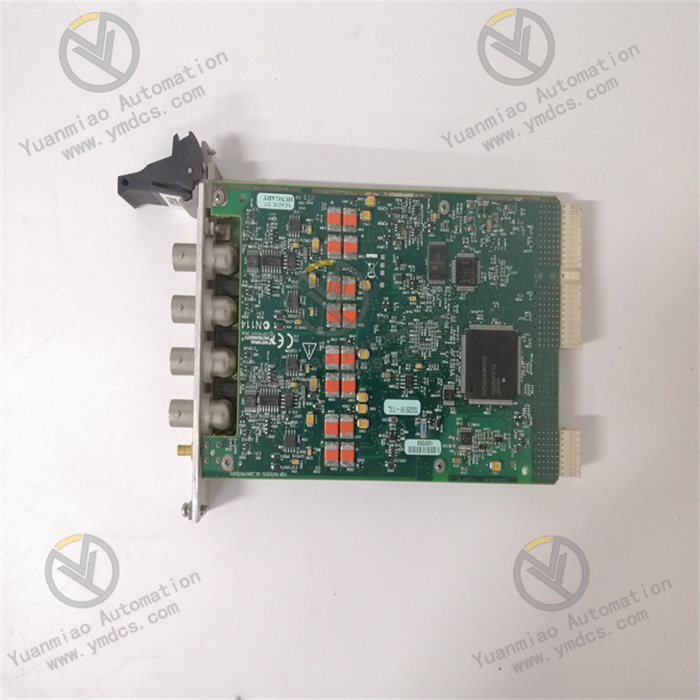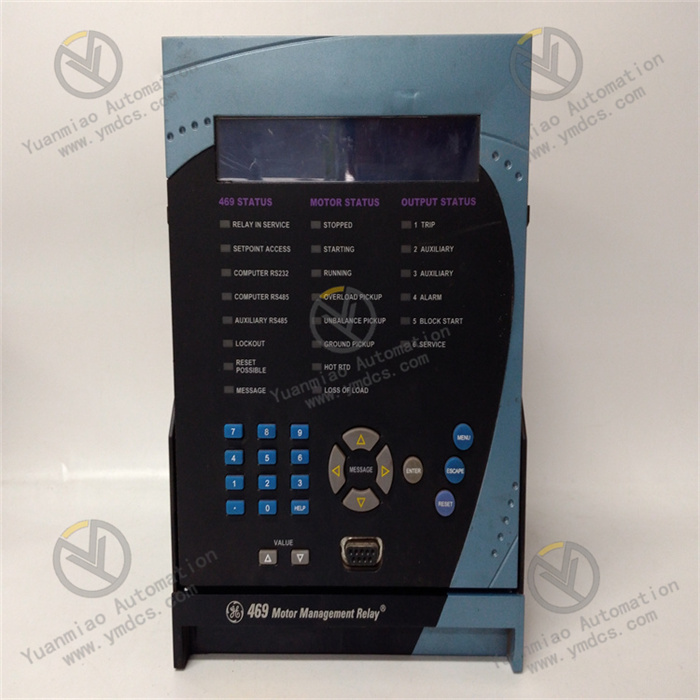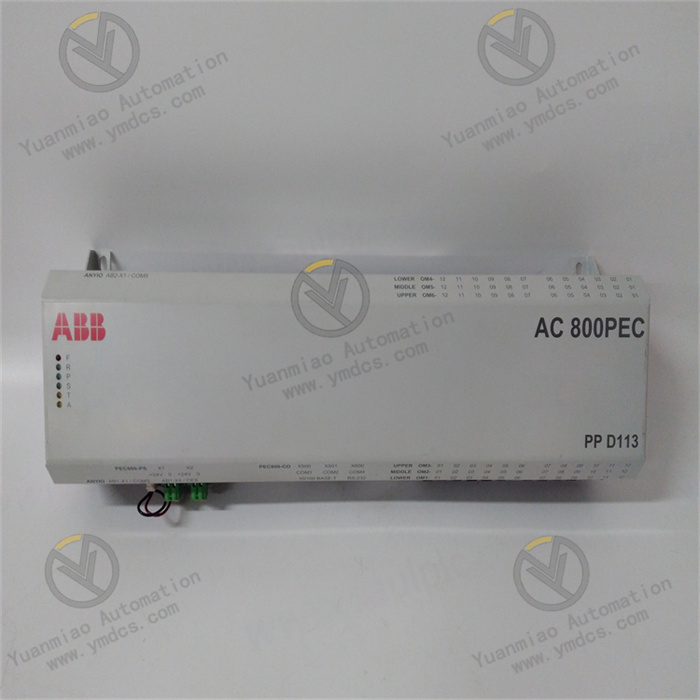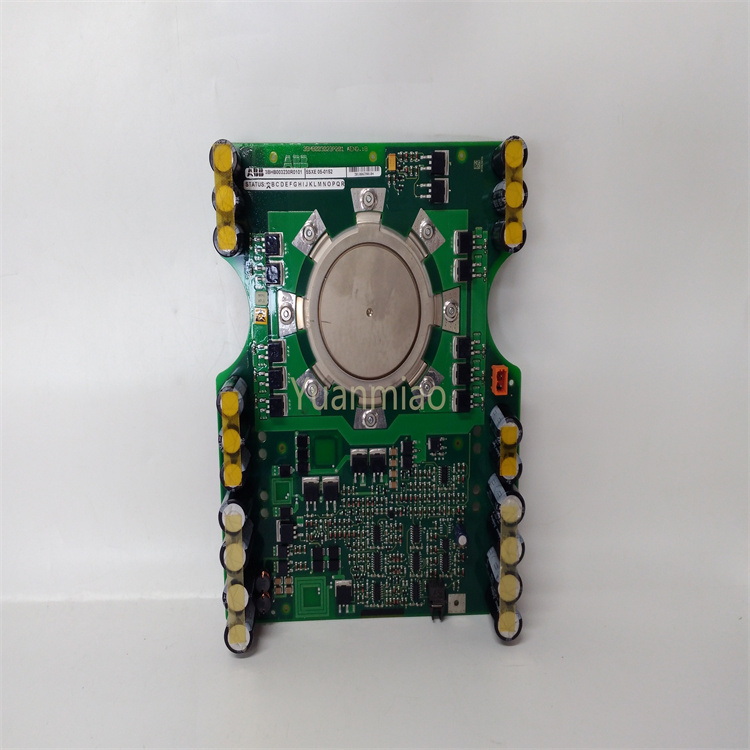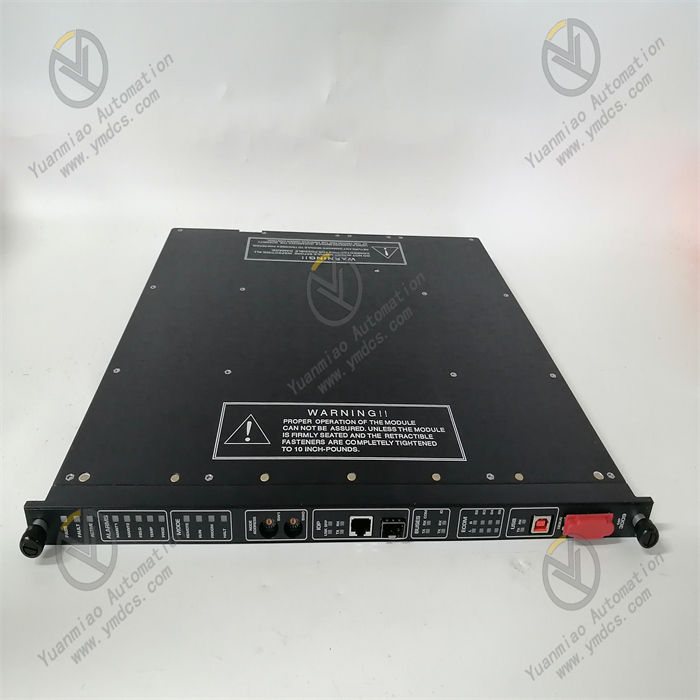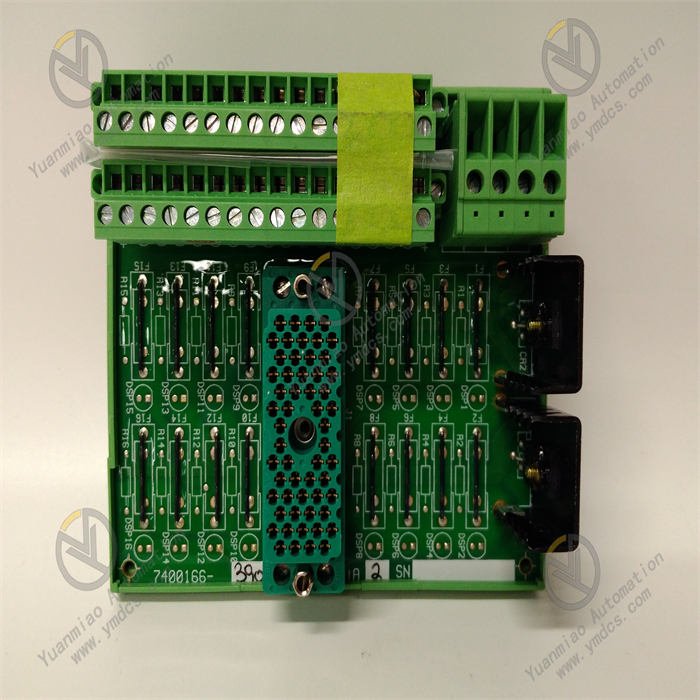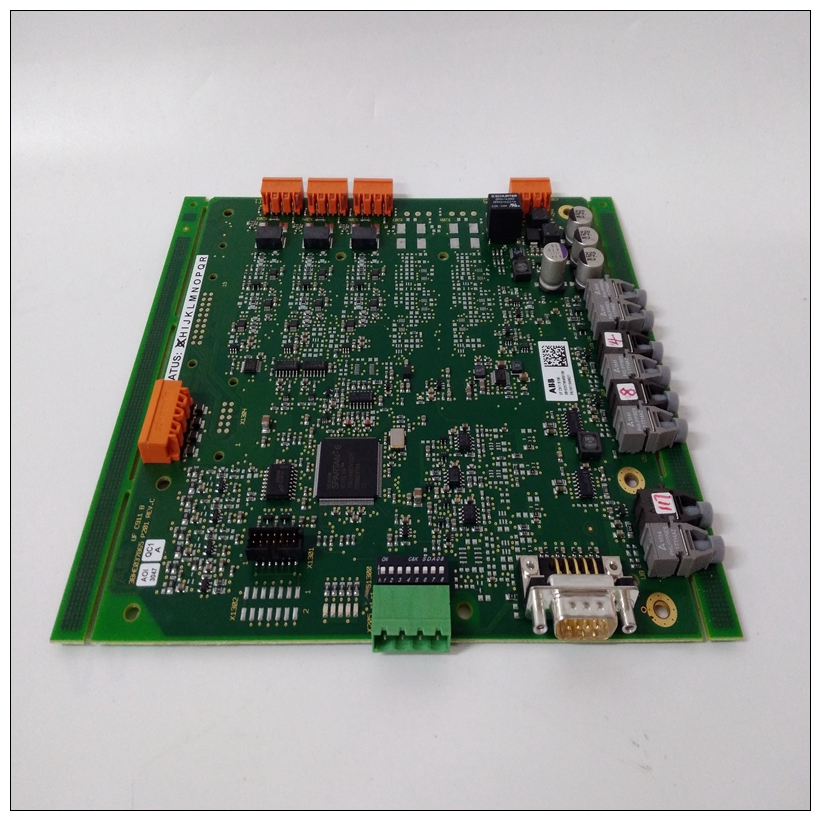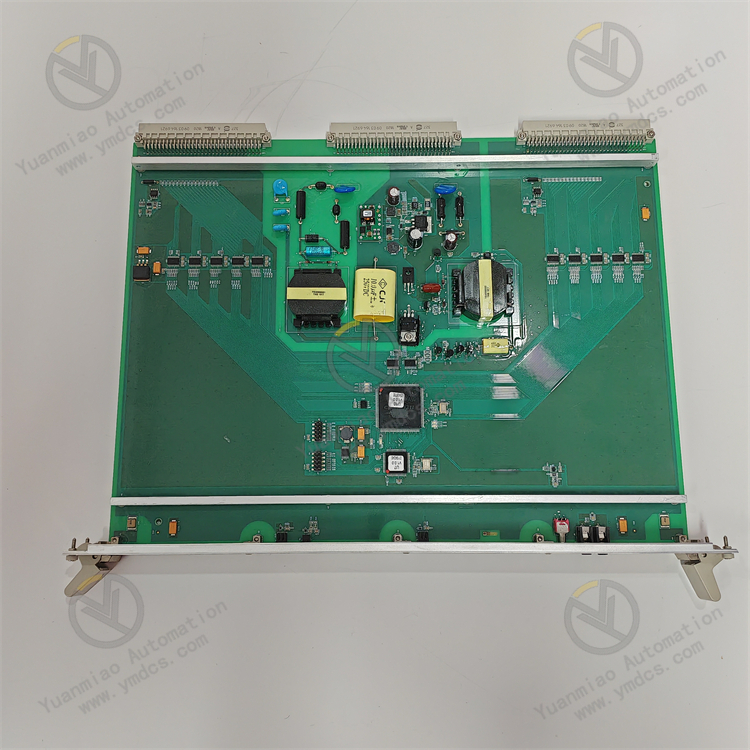Description
GE Multilin UR9AH
I. Overview
GE Multilin UR9AH is a high-performance CPU module meticulously developed by General Electric (GE) specifically for industrial automation and power system protection and monitoring. Leveraging GE's profound technical accumulation and rich practical experience in the power and industrial sectors, the UR9AH integrates advanced processing technology and flexible control logic. It is committed to meeting the complex and ever-changing application needs of modern industry, playing a crucial role in the industrial automation process, and providing solid guarantees for the stable and efficient operation of various industrial systems.
II. Technical Parameters
(I) Input/Output and Data Processing
- Analog Input/Output: In terms of analog input, it can accurately collect common standard analog signals such as 4-20mA and 0-10V, which is suitable for connecting various analog detection devices like temperature sensors, pressure transmitters, and flow sensors. Its high input resolution ensures that it can 敏锐 ly capture subtle changes in physical quantities during industrial processes, providing a precise data foundation for the control system. The analog output is also excellent, capable of stably outputting standard signals such as 0-10V and 4-20mA for precise regulation of various actuators. The output accuracy is controlled within a minimal error range, ensuring precise adjustment of equipment operating parameters.
- Digital Input/Output: The digital input channels support multiple types of inputs such as NPN/PNP, with an extremely fast response speed, capable of quickly sensing the switch status of external devices (such as the triggering of limit switches, button actions, and changes in the auxiliary contact status of contactors) within milliseconds, and promptly feeding this information back to the control system. The digital output adopts a high-capacity relay output form, which can directly drive small motors, solenoid valves, indicator lights, and other equipment. The contacts have good electrical performance and mechanical life, and are equipped with an overcurrent protection mechanism, ensuring reliable operation even under high load or abnormal conditions and protecting the safety of downstream equipment.
- Data Processing Capability: It is equipped with a high-performance microprocessor, boasting strong computing and data processing capabilities. It can quickly process a large amount of input data and generate corresponding control commands based on preset logic and algorithms. It has a 32KB user memory space, which can store various programs, data, and intermediate results during operation, meeting the storage requirements of complex industrial applications. The logic execution speed can reach 0.22msec/K, ensuring that the system can respond promptly to changes in the industrial field and achieve efficient real-time control.
(II) Communication Function
- Communication Protocol Support: It is fully compatible with mainstream industrial communication protocols such as Modbus RTU and Profibus DP, enabling seamless connection and data interaction with various automation equipment and systems such as PLCs, HMIs (Human-Machine Interfaces), and SCADAs (Supervisory Control and Data Acquisition systems). Whether in small industrial automation units or large distributed industrial control systems, it can be smoothly integrated to realize collaborative work between devices.
- Communication Interface Configuration: It is equipped with 1 RS485 communication interface. The communication rate of this interface can be flexibly adjusted within the wide range of 9600bps to 115200bps to meet the communication speed requirements of different application scenarios. The maximum transmission distance can reach 1200 meters, effectively solving the communication problems caused by the dispersion of industrial field equipment. In addition, the RS485 interface has an excellent photoelectric isolation function, which can greatly enhance the anti-electromagnetic interference capability, ensuring accurate and stable transmission of communication data in complex industrial electromagnetic environments and avoiding problems such as data loss and bit errors.
(III) Power Supply and Environmental Adaptability
- Power Supply Specifications: It adopts a 24V DC power supply mode, with an allowable input range of 18-30V DC, featuring good power supply adaptability and stable operation under a certain degree of voltage fluctuation. Meanwhile, it has built-in complete overvoltage, undervoltage, and overcurrent protection circuits. When an abnormal power supply occurs, it can quickly cut off the power supply to prevent damage to the precision circuits inside the module caused by excessive or insufficient voltage and excessive current, thereby extending the service life of the module. Under normal working conditions, the power consumption of the module is low, only about 5W, which helps reduce the energy consumption of the entire industrial system.
- Environmental Adaptability: In terms of operating temperature, the UR9AH can stably operate within a wide temperature range of -25℃ to 70℃, working normally both in harsh outdoor environments with cold weather and high-temperature industrial production workshops. The humidity adaptation range is 5%-95% (non-condensing), enabling it to cope with high-humidity environments such as damp basements and coastal factories, demonstrating excellent environmental adaptability and ensuring reliable operation in various harsh industrial environments.
III. Functional Features
(I) Powerful Control Function
- Support for Multiple Control Algorithms: It supports a variety of advanced control algorithms, such as the classic PID control algorithm. It can accurately adjust the output based on the deviation between the set value and the actual feedback value through proportional, integral, and differential operations, keeping the parameters of the controlled object within the set range. It is widely used in scenarios requiring precise control of continuous quantities such as temperature, pressure, and flow. At the same time, it also supports intelligent control algorithms such as fuzzy control, which is suitable for industrial process control that is complex and difficult to establish accurate mathematical models. It realizes effective control of the system by simulating human fuzzy reasoning and decision-making processes.
- Multi-Loop Control Capability: It can handle multiple control loops simultaneously, performing parallel monitoring and control of multiple devices or parameters. For example, in the chemical production process, it can simultaneously monitor and regulate parameters such as temperature, pressure, and liquid level of multiple reaction kettles in real-time, ensuring that each reaction process proceeds stably and efficiently, which greatly improves the automation level and production efficiency of industrial production.
(II) High Reliability Design
- Hardware Reliability: In terms of hardware design, industrial-grade high-quality electronic components are selected, which have undergone strict screening and testing to ensure their reliability and stability in harsh environments. It adopts a multi-layer PCB design, optimizes the circuit layout, reduces signal interference, and improves electrical performance. The module is packaged with an all-metal shell, with a protection level of IP20, effectively preventing dust and foreign objects from entering, while enhancing resistance to mechanical shock and vibration. It can work normally under vibration (10-500Hz, 1g acceleration) and shock (10g acceleration, 11ms duration) environments common in industrial fields.
- Software Reliability: It has a complete self-diagnostic function, which can monitor the power supply status, communication connection status, input/output channel status, and the operation status of internal key components of the module in real-time. Once a fault is detected, it will immediately notify maintenance personnel through indicator light flashing, alarm information sent via the communication interface, etc., and record detailed fault codes and related data, facilitating quick fault location and elimination. It supports online firmware upgrade function, allowing users to remotely update the module's program through the communication interface, continuously optimizing the module's functions, improving performance, and promptly fixing potential software vulnerabilities to ensure that the module always maintains the best operating state.
(III) Flexible Configuration and Expandability
- Programming and Configuration Methods: It supports parameter configuration and program writing through dedicated programming software. The software provides an intuitive and user-friendly graphical operation interface and supports multiple programming languages such as ladder diagrams, function block diagrams, and instruction lists, facilitating engineers with different technical backgrounds to carry out flexible personalized development according to actual control needs. Whether it is simple logic control or complex process control, it can be easily realized.
- Modularity and Expandability: It adopts a modular design concept, which can flexibly match different functional modules according to actual application needs, such as analog input/output expansion modules, digital input/output expansion modules, communication expansion modules, etc., facilitating system function expansion and upgrading. The module adopts a standardized installation size, which can be conveniently installed on DIN rails. The installation and disassembly processes are simple and fast, facilitating system integration and maintenance. Its compact structure design effectively saves installation space, making it particularly suitable for use in industrial control cabinets with limited space.
IV. Application Fields
(I) Power System Protection and Monitoring
- Substation Automation: In substations, the UR9AH can monitor key parameters of the power system such as voltage, current, and power in real-time. By analyzing these data, it can promptly detect abnormal conditions in the power system, such as overcurrent, overvoltage, undervoltage, and leakage faults, and quickly trigger corresponding protection actions such as tripping and alarming, ensuring the safe operation of substation equipment and the stability of power supply. At the same time, it can communicate with other automation equipment in the substation to realize data sharing and collaborative control, improving the automation management level of the substation.
- Transmission Line Protection: It is used for the protection and monitoring of transmission lines. By collecting current and voltage signals on the lines and using advanced protection algorithms, it can quickly and accurately judge and handle faults such as short circuits, open circuits, and overloads of transmission lines, preventing fault expansion and ensuring the reliable operation of transmission lines. It can also monitor the operation status of transmission lines in real-time, providing data support for line maintenance and repair, and improving the operation and maintenance efficiency of transmission lines.
(II) Industrial Automation Production Lines
- Manufacturing Industry: In manufacturing production lines such as automobile manufacturing, electronic equipment manufacturing, and mechanical processing, the UR9AH can accurately control and monitor the operation status of production equipment. For example, in automobile assembly lines, it can control the movement trajectory, speed, and force of robotic arms to ensure precise assembly of components; in the production process of electronic components, it can accurately control the temperature, time, and welding current of welding equipment to ensure welding quality. Through precise control of the production process, it improves product quality and production efficiency and reduces production costs.
- Food and Beverage Industry: In the food and beverage production process, it strictly controls parameters such as temperature, pressure, and flow of production equipment to ensure product quality and production safety. For example, in the beverage filling process, it accurately controls the liquid level and flow of filling equipment to ensure that the filling volume of each bottle of beverage is accurate and consistent; in the food baking process, it precisely controls the temperature and time of the oven to ensure the best baking effect of food. At the same time, its design that meets food industry hygiene standards can meet the strict requirements for equipment cleanliness and hygiene in the food production process.
(III) Energy and Resource Fields
- Petrochemical Industry: In the petrochemical production process, it conducts real-time monitoring and control of various reaction devices, transmission pipelines, storage equipment, etc. By collecting parameters such as temperature, pressure, flow, and liquid level and using advanced control algorithms, it optimizes the production process, improves product yield and quality, and reduces energy consumption and environmental pollution. For example, in the oil refining process, it accurately controls the temperature and pressure of the distillation tower to achieve efficient separation of crude oil; in the chemical synthesis process, it automatically adjusts the feed amount of raw materials and reaction conditions according to changes in temperature and pressure in the reaction kettle to ensure stable progress of the reaction.
- Mining Industry: It is applied to the automatic control and monitoring of mining equipment, such as the operation control of hoists, ventilators, crushers, and other equipment. By real-time monitoring and analyzing the operating parameters of the equipment, it can promptly detect potential equipment faults, conduct maintenance and repair in advance, and avoid production interruption caused by sudden equipment failures. At the same time, it can optimize the operating parameters of the equipment according to the actual situation of mining, improve mining efficiency, and reduce energy consumption and production costs.


